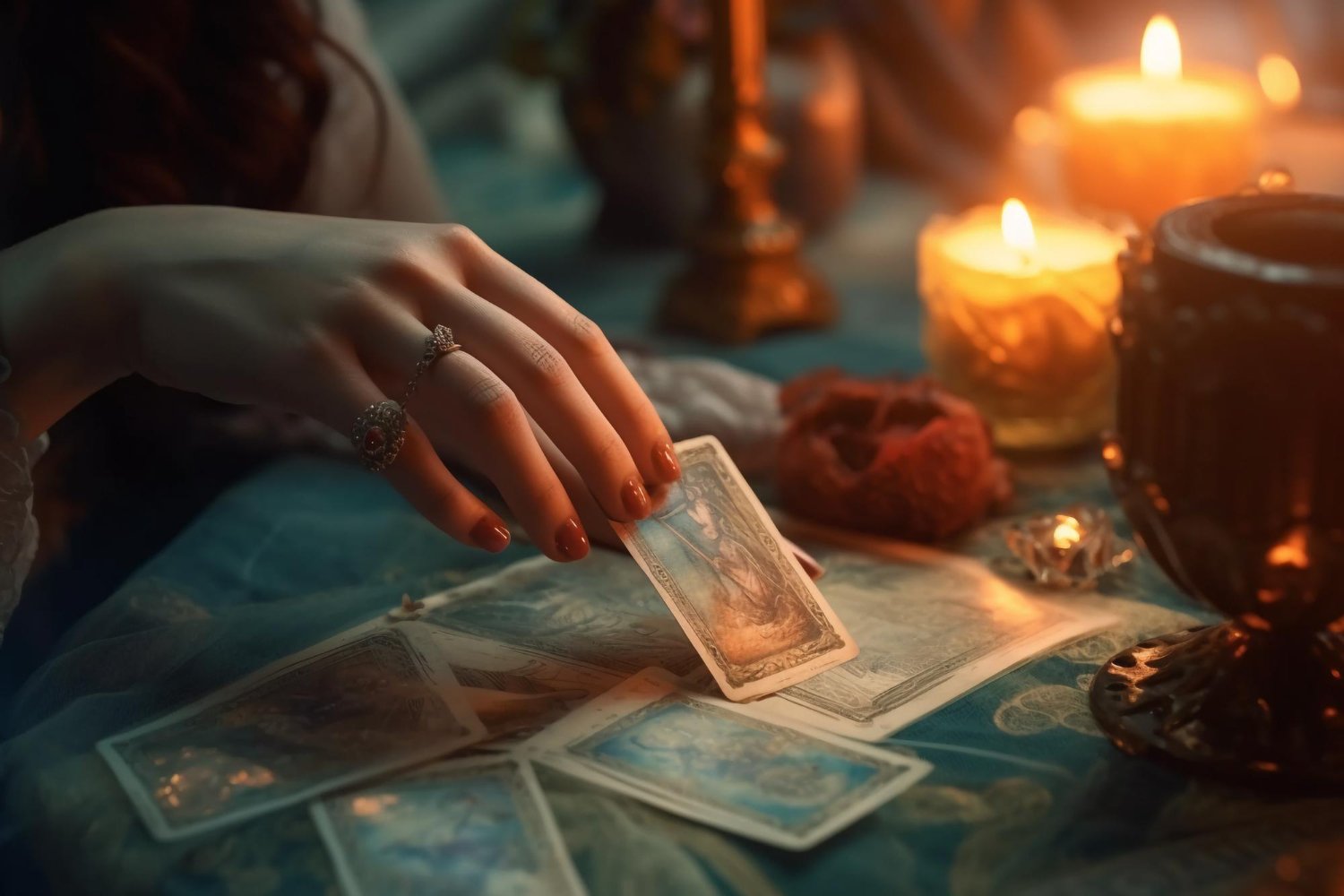Each card in the Major Arcana captures a stage on the journey of life, a facet of the human experience, or a spiritual lesson. They reflect the larger lessons and trends in our lives, offering guidance and insight into our personal narratives and life paths. As a whole, the Major Arcana depict a journey – often referred to as “The Fool’s Journey.” This journey mirrors our own life’s path, starting from The Fool (0), representing the beginning and innocence, to The World (XXI), symbolizing completion and unity. Each card along this path represents a stage of life, a type of experience, or a lesson to be learned.
The Fool’s Journey
- The Fool (0): This is the start of the journey. The Fool is us at the beginning of our life or the start of a new chapter, eager and curious, yet unaware of what lies ahead.
- The Magician to The Chariot (I-VII): These cards represent the early challenges and lessons we face, as well as the development of personal power and understanding of the world around us.
- Strength to Temperance (VIII-XIV): This segment of the journey involves internal growth – mastering emotions, understanding the balance of opposites, and learning patience and moderation.
- The Devil to The Sun (XV-XIX): Here, the journey goes through phases of self-realization and overcoming limitations. It’s a time of breaking free from constraints and discovering true potential.
- Judgement (XX): Near the end of the journey, this card represents rebirth and reflection, calling us to review our past actions and decisions, leading to spiritual awakening.
- The World (XXI): As the final card, The World signifies completion, accomplishment, and a sense of unity and wholeness. It marks the end of one cycle and the beginning of another.

In readings, the appearance of Major Arcana cards suggests that the querent is experiencing significant events or chapters in their life which have strong spiritual, psychological, or emotional undertones. These cards often point to underlying themes and deeper life lessons that are in play.
Overview of the Minor Arcana: The Four Suits and Their Meanings

In contrast to the 22 individual cards of the Major Arcana, the Minor Arcana is comprised of 56 cards divided into four suits – Cups, Wands, Swords, and Pentacles. Each suit contains ten numbered cards and four court cards (Page, Knight, Queen, and King), reflecting different aspects of the respective suit. Each suit relates to a specific aspect of human experience and has its unique symbolism:
- Cups: Associated with the element of Water, this suit deals with emotions, relationships, and feelings. Cards in this suit often speak to matters of the heart and emotional connections.
- Wands: Linked to the element of Fire, Wands represent passion, inspiration, and willpower. They are often related to personal growth, creativity, and ambition.
- Swords: Corresponding to the element of Air, the Swords are about intellect, thought, and reason. This suit is often indicative of challenges, conflicts, and decision-making processes.
- Pentacles: Tied to the element of Earth, Pentacles focus on material aspects of life such as work, finance, and practical affairs. They are concerned with manifestation, stability, and physical experiences.
Significance of Numbers and Court Cards in Tarot
In Tarot, numbers also carry symbolic meaning. Irrespective of the suit, each number in the Minor Arcana and each position in the court cards of a Tarot deck generally hold a specific theme or archetype that carries across all suits. These themes provide a foundational understanding of the cards, which can then be interpreted more specifically within the context of their particular suit:
- Ace: New beginnings, opportunities, potential, and a sense of initiation or the start of something.
- Two: Duality, balance, partnership, and choices. It often signifies a need for decision-making.
- Three: Development, growth, the initial stages of fruition, and the results of a union.
- Four: Stability, structure, foundations, but sometimes stagnation or a need for change.
- Five: Challenge, conflict, change, and sometimes loss or adversity that prompts growth.
- Six: Communication, harmony, and balance after the disruption of the five. Often indicates a recovery or a problem-solving phase.
- Seven: Reflection, assessment, and often a deeper understanding or a challenge to one’s usual approach.
- Eight: Movement, action, change, and sometimes the swift development of events.
- Nine: Near completion, fulfillment, but often coupled with a need for final push or introspection.
- Ten: Completion, the end of a cycle, culmination, and the outcome of the preceding stages.

Like the numbers of a tarot deck, the Court Cards – Page, Knight, Queen, and King – also represent consistent themes related to personality or approach to life:
- Page: Represents the beginner, a sense of discovery, new insights, messages, and sometimes youthful naivety or curiosity.
- Knight: Symbolizes action and movement, often associated with a quest or a pursuit, but can also indicate impetuousness or lack of foresight.
- Queen: Embodies maturity, reflection, nurturing, and the internalization of the suit’s qualities. Queens often represent the social and emotional intelligence aspect.
- King: Represents authority, control, mastery, and the external mastery of the suit’s qualities. Kings often symbolize the realization of power and the responsibility that comes with it.
Understanding the structure of a Tarot deck, with its Major and Minor Arcana, is crucial for interpreting the cards. Each card carries a wealth of symbolism and meaning, which can be pieced together to form a narrative or provide insight into a situation, decision, or challenge.

